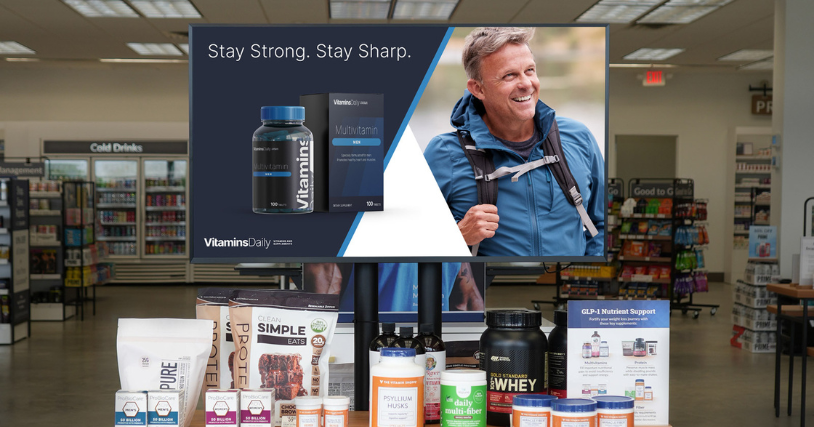
This blog is part of the Grocery Digital Signage Series. View previous insights.
The lack of a clear strategy and loosely defined goals is why so many digital transformations fail to deliver the expected results. Many grocers begin the digital signage journey without fully understanding how they align with their core business objectives or how they meet the needs of their customers. This leads to fragmented efforts, wasted resources, and a failure to deliver meaningful results that enhance the consumer experience.
In the end, a digital signage provider is essential to the success of any digital communication implementation. Some providers stop after the initial install and integration, and some only provide the software with no further integration or support. These multi-vendor implementations cause issues with consistent support and rarely generate the promising results clients are seeking.
The Missing Link in Most Grocery Digital Signage Programs
A managed services provider that offers end-to-end support is a critical partner in delivering lasting impact and ROI. These providers, like Hughes, are responsible for both setup and deployment, and will also guide store staff through implementation and beyond. A store may rely on Hughes to configure digital screens, train staff on content scheduling, and monitor system performance to prevent downtime during high traffic shopping hours.
Leading providers set themselves apart from the competition by going beyond installation and providing long-term values to clients. They help teams stay focused on content effectiveness by providing continuous services to aid internal teams and assisting with the management of screens and displayed content. Typically, continuous content creation and scheduling are the primary focus for providers who offer management and support across locations. These full-service providers have advanced capabilities that can deliver customized cloud-based content, multi-site remote device management, and around-the-clock support. It is only through these types of end-to-end services that grocers can reliably expect to achieve the outcomes that matter most to them. For example, a grocer managing ten locations might use centralized tools to push updates promotions to all stores simultaneously, ensuring campaign consistency and reducing manual errors.
Oftentimes, marketing and operations teams simply don’t have the time and resources to continually deliver new and engaging content. As such, content and messaging become outdated after the initial rollout, thus lessening the impact on customers. Digital signage offers a solution to this, but some established employees may resist the adoption of new systems. Without a strong buy-in by all managers, new initiatives may be treated as a low priority. A manager unfamiliar with the system might postpone content updates, leading to promotions that feel stale or irrelevant. Having a managed provider onboard can keep content aligned with seasonal events, corporate campaigns, or local initiatives, even if internal bandwidth is limited.
In these cases, a managed digital signage provider like Hughes will help you achieve ROI by leading teams through the introduction of a new program and providing consistent rigor to maintain forward momentum with maturity.
Rather than leaving stores to troubleshoot or seek additional resources, managed signage ensures support at every step to simplify scalability and minimize IT burden.
Find out today how we can simplify your signage program and increase profitability.
Discover more from the Grocery Digital Signage Playbook Blog Series: